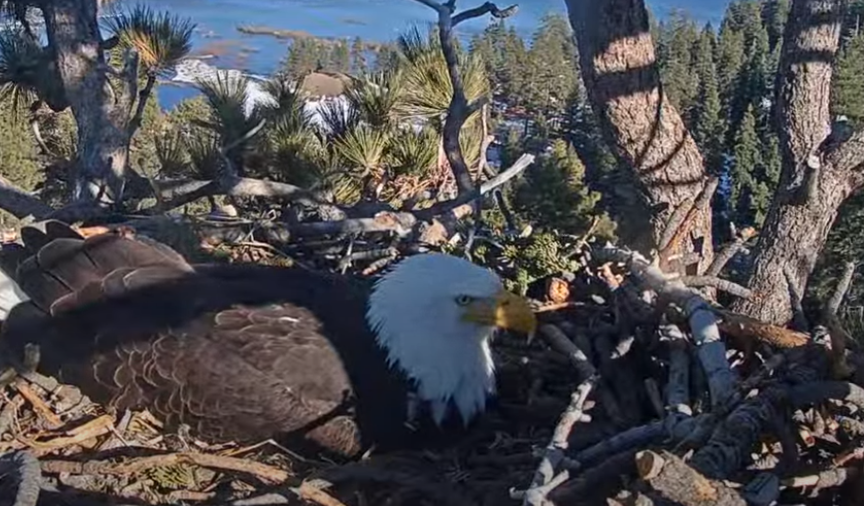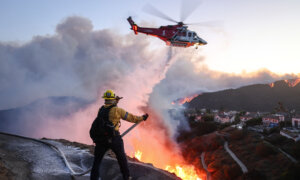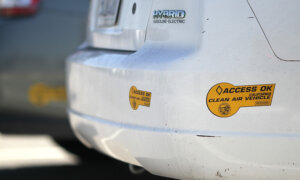As the countdown continues for the hatching of three bald eagle eggs in California’s Big Bear Valley, with a live webcam view available on YouTube, experts say one egg may not make it.
The possible window for hatching was estimated to start around 4:55 p.m. Feb. 29, according to the nonprofit Friends of Big Bear Valley, but the eggs have yet to show signs of life as experts say the first egg may no longer be viable.
“We understand that everyone is worried about the eggs, some afraid to watch the cam, some afraid to turn away. ... Eggs 2 and 3 are still within the possible hatching window. Egg 1 is probably not,” the nonprofit, which provides updates on social media, said on its Facebook page on March 7.
The group consoled concerned fans, who have been anxiously awaiting parents Jackie and Shadow’s eggs to hatch, saying the group is not sure why egg one hasn’t yet shown a “pip,” but “that is nature.”
“We stopped zooming on the eggs so often because it seemed to be causing more upset and concern than curiosity and calmness. If and when a pip happens, we do not have to know about it instantly. We will see it soon enough,” they wrote.
The “pip,” the group explains on its Facebook page, is a small rise in the eggshell and is visible only up close.
During the hatching process when a baby chick needs more air—as oxygen in the egg membrane is depleted—it uses a small protrusion, or “egg tooth,” on top of its beak to poke through the egg membrane and create an internal pip.
When it pokes through the eggshell, it creates an external pip, the group explains. The Friends’ Facebook page has nearly 670,000 followers.
“The initial pip usually looks like a small raise, often shaped like a star, and is only visible when the camera is zoomed in. The eggs may have some dirt smudges or fluff stuck on them—those are not pips,” they said in a recent Instagram post.
Egg one’s estimated pip date was expected based on a previous hatching that took 38 to 39 days, according to recent posts on the Facebook page. While the first egg was laid on Jan. 25, eggs two and three were laid on Jan. 28 and 31, according to the nonprofit’s website.
One possible issue is egg one received “considerably more delayed” incubation time because of the other eggs, since this was Jackie and Shadow’s first “full three-egg clutch,” according to the nonprofit.
Thanks to one wide angle and one close-up camera, the eagle nest can be viewed 24/7 on the nonprofit’s YouTube channel.














